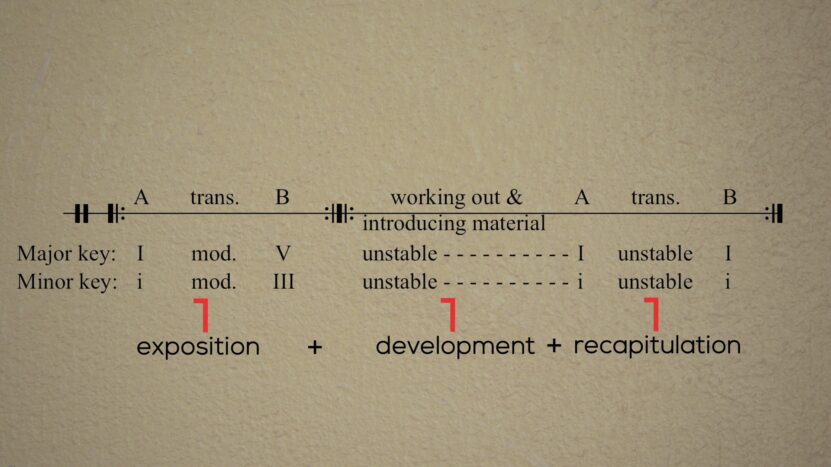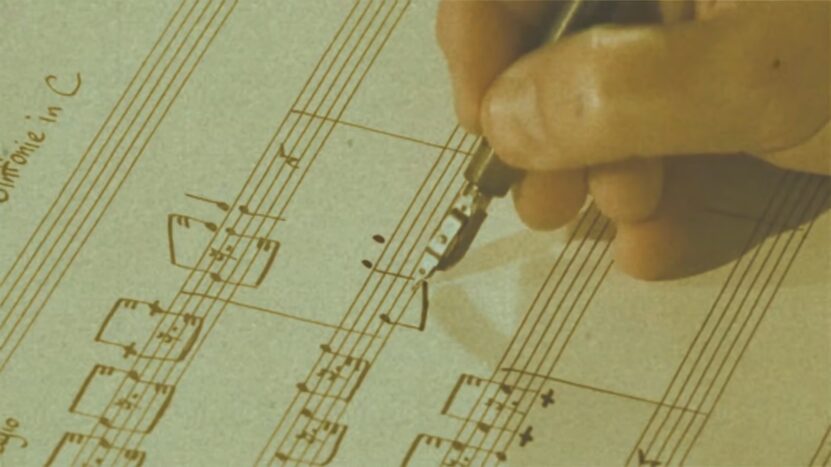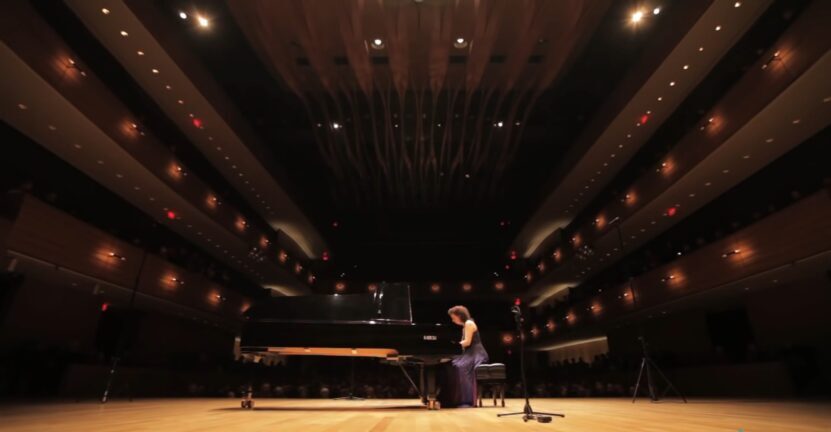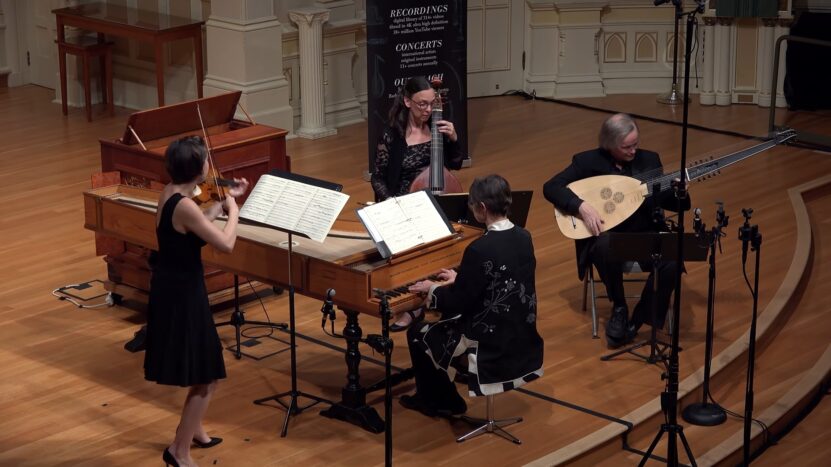A sonata, in the realm of classical music, is a composition typically for a solo instrument or a small ensemble, structured in multiple movements with at least one in a specific sonata form. This form, a cornerstone in classical music, has evolved over centuries, shaping the landscape of Western music.
In this comprehensive guide, we’ll look into the sonata’s rich history, its structural elements, and its enduring influence in the modern musical world.
The Historical Evolution
First, let’s explore the historical origins of the sonata genre.
The Birth and Growth in the Baroque Era
The sonata’s journey began in the early 17th century during the Baroque era. Initially, the term “sonata” was applied broadly to instrumental pieces.
However, it was Italian composer Arcangelo Corelli who crystallized the form, distinguishing between the ‘sonata da chiesa’ (church sonata) and ‘sonata da camera’ (chamber sonata). These early sonatas were characterized by their contrast in movements, often alternating between slow and fast tempos.
As the Baroque era progressed, the form became more defined. Composers like Antonio Vivaldi and Johann Sebastian Bach expanded the sonata’s structure, experimenting with new musical ideas.
Vivaldi’s ‘Sonata in D Minor‘ (RV 12) is a prime example of the era’s evolving style, showcasing a blend of bold harmonies and intricate melodies.
The Classical Ere
The Classical era, spanning from the mid-18th to the early 19th century, witnessed the sonata reaching its zenith. The sonata-allegro form, a specific structure for a single movement, became the standard.
This form typically includes three main sections: exposition, development, and recapitulation, often followed by a coda. It was during this period that composers like Wolfgang Amadeus Mozart, Ludwig van Beethoven, and Franz Joseph Haydn mastered and innovated within this form. Renowned for his brilliant concertos, Ludwig van Beethoven’s influence in the world of music extended even further as he revolutionized the sonata genre.
His 32 piano sonatas, including the famous ‘Moonlight Sonata‘ and ‘Pathétique‘, pushed the boundaries of the form, incorporating dramatic themes, emotional depth, and structural complexity. Beethoven’s sonatas are not just compositions; they are emotional journeys that continue to influence musicians and composers today.
Structure and Elements

The form, primarily used in the first movement of a sonata, is a musical blueprint that has fascinated composers and audiences alike. Its structure creates a journey of musical themes, key changes, and dramatic conflicts and resolutions.
The exposition introduces the main themes, usually in contrasting keys. The development section then takes these themes on a transformative journey, often through various keys and inventive variations.
The recapitulation brings back the main themes, typically in the original key, providing a sense of resolution. Key changes are vital in the form, creating tension and release.
The primary theme is usually in the home key, while the secondary theme modulates to a different key, often the dominant or relative major/minor.
This modulation sets the stage for the drama in the development section, where the themes are dissected and explored in new contexts.
The Movements

While the first movement is often in form, subsequent movements in a sonata explore different structures. The second movement typically offers a contrast, often slower and more lyrical, sometimes adopting a ternary (ABA) or theme and variations form.
The third movement, if present, might be a minuet and trio, a rondo, or a theme and variations. It is often in a fast tempo, providing a lively and energetic conclusion to the sonata.
The sonata form is a complex and sophisticated musical structure that has been used by composers for centuries to create some of the most beloved and enduring works in classical music.
Enduring Influence
The sonata form’s influence can be heard in a wide range of musical genres, from classical to jazz to rock. Classical composers such as Johannes Brahms, Frédéric Chopin, and Pyotr Ilyich Tchaikovsky continued to develop and innovate within the form, producing masterpieces that continue to be performed and enjoyed today.
In the 20th century, composers began to experiment with new musical styles and forms, but it remained an important influence. Jazz musicians such as Duke Ellington and Thelonious Monk incorporated form elements into their improvisations, while rock bands such as The Beatles and Pink Floyd used sonata form structures in their compositions.
Today, the form continues to be used by composers and musicians of all genres. It is a versatile and expressive structure that allows composers to explore a wide range of musical ideas.
From the complex and sophisticated sonatas of Beethoven to the accessible and catchy pop songs of today, the sonata form’s enduring influence is a testament to its power and versatility.

Here are a few examples of modern compositions that are influenced by the sonata form:
- “Rhapsody in Blue” by George Gershwin (jazz)
- “A Day in the Life” by The Beatles (rock)
- “Bohemian Rhapsody” by Queen (rock)
- “November Rain” by Guns N’ Roses (rock)
- “Clair de Lune” by Claude Debussy (classical)
- “Moonlight Sonata” by Ludwig van Beethoven (classical)
- “Appassionata Sonata” by Ludwig van Beethoven (classical)
These are just a few examples of the many ways in which the form has influenced modern music. It is a testament to the form’s enduring power and versatility that it continues to be used by composers and musicians today to create some of the most beloved and enduring works in music.
FAQ
How did the form evolve during the Romantic era?
In the Romantic era, the sonata form saw further evolution with composers like Chopin and Brahms. They expanded the emotional range and structural complexity, often blurring the lines between movements and integrating more lyrical and expressive themes.
Can it be found in genres outside of classical music?
Yes, the sonata form has influenced various genres, including jazz and rock. Artists like Duke Ellington in jazz and bands like Pink Floyd in rock have incorporated elements of the sonata form into their music, demonstrating its versatility.
What makes Beethoven’s sonatas particularly significant in the history of music?
Beethoven’s sonatas are significant for their innovative approach. He expanded the emotional depth, thematic development, and structural complexity of the form, setting new standards for emotional expression and technical mastery in music.
Are there contemporary composers who still use the form?
Yes, contemporary composers continue to explore and reinterpret the sonata form, often blending it with modern musical elements and technologies, thus keeping the form relevant and dynamic in today’s music scene.
How does the form contribute to the narrative of a musical piece?
The sonata form, with its distinct sections of exposition, development, and recapitulation, creates a musical narrative. It allows for the introduction, exploration, and resolution of musical themes, akin to storytelling in music.
What role do key changes play?
Key changes in the sonata form are crucial for creating tension and release. They provide contrast and drama, especially between the primary and secondary themes, and are integral to the form’s dynamic and expressive nature.
Final Words
The sonata, with its rich history and complex structure, stands as a testament to the enduring power and versatility of musical composition. This form has not only shaped classical music but has also influenced a wide range of genres, including jazz and rock.
Its presence in modern music, evident in works like Queen’s “Bohemian Rhapsody,” showcases its adaptability and relevance. As a living, evolving form, the sonata continues to be reinterpreted by contemporary composers and musicians, ensuring its place in the future of music.

